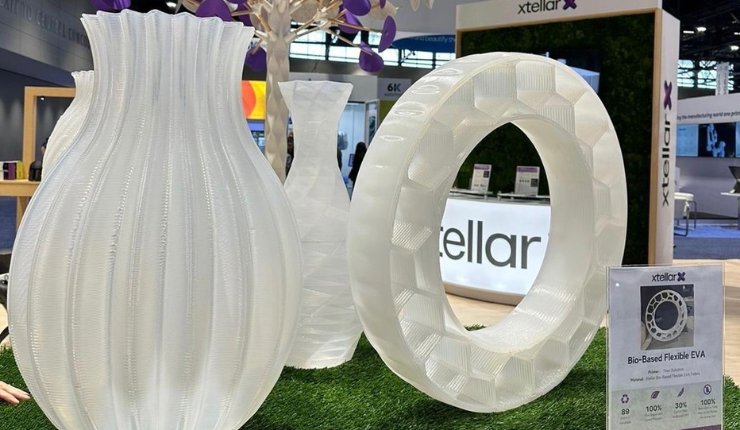



 CN/EN
CN/EN




 CN/EN
CN/EN

Xtellar, a company formed through the combination of Braskem’s 3D printing materials division and Taulman3D, has introduced what it claims is an ‘industry-first’ for large-format 3D printing. Launched at RAPID + TCT 2023, to a strong reception according to Xtellar, the bio-based EVA pellets bring flexibility and sustainability to a variety of pellet compatible 3D printers says the company.
EVA is a clear, hygroscopic, amorphous, elastomeric material that is sourced from raw sugar cane feedstock according to Xtellar. The company says its range of bio-based 3D printing polymers offers ‘the next evolution’ in sustainable solutions for AM.
With the material being sourced from raw sugar cane feedstock, the materials have a lower carbon footprint than traditional fossil fuel-based materials says the company. Xtellar claims that its new pellets are the 3D printing industry’s first sustainable flexible material to be derived from such a source.
“Bringing a wider variety of sustainable material options to 3D printing is one of Xtellar’s core missions. In 2022, we launched the industry’s first bio-based polyethylene and flexible EVA 3D printing filaments, and this year we continue our mission by launching the first bio-based flexible EVA pellets specifically formulated for large-format 3D printing applications,” said Jason Vagnozzi, Xtellar CEO.
According to Xtellar, the material is suited for use in industries such as automotive, marine, aerospace, consumer and industrial, as it has high toughness and can be used in durable applications.
The material has a density of 0.94 g/cm3, 300% elongation in XY direction, 89 Shore A, -36°C glass transition temperature, controllable opacity and stiffness with external cooling, and is hydrophobic according to the company.
Vagnozzi added: “This material is an excellent sustainable alternative to many traditional TPU materials currently used for additive manufacturing and reaffirms our commitment to a more circular, carbon-neutral future. We couldn’t be more excited about this latest addition to our product portfolio and will continue to innovate more sustainable options to meet our clients’ growing needs for more sustainable 3D material alternatives.”